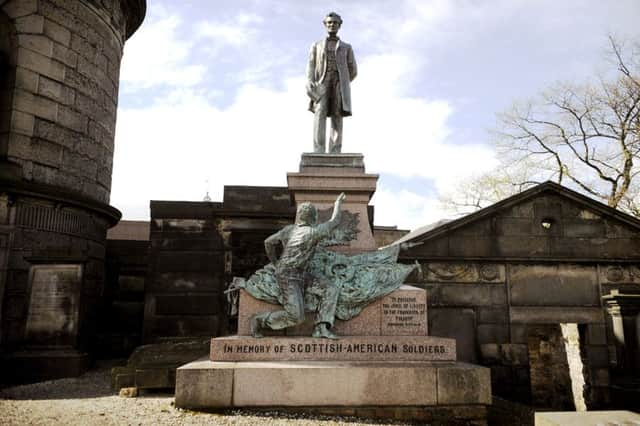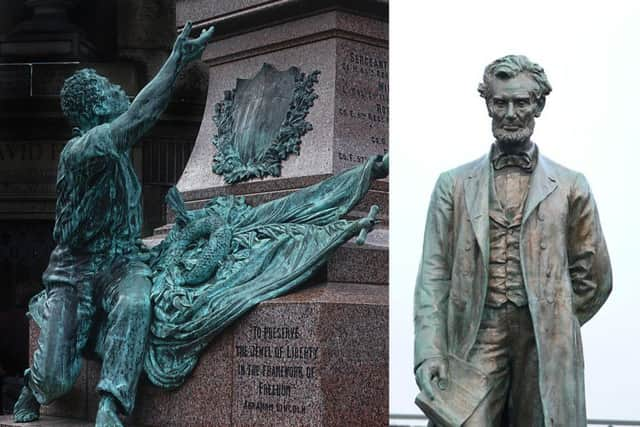Why is there a monument to Abraham Lincoln in Edinburgh?


George Washington, the first president of the United States, was born on February 22, 1732, with the third Monday in February being designated as a federal holiday in 1971.
The newly-designated Presidents Day combined Washington’s birthday with that of sixteenth US president Abraham Lincoln, born on February 12 1809.
Advertisement
Hide AdAdvertisement
Hide AdLincoln is also the only US president to have a memorial in Scotland - indeed, the first in Europe.


Built in 1893, it can be found in the Old Calton Cemetery in Edinburgh city centre, and commemorates the Scots who fought on behalf of the Union during the American Civil War.
Six sons of Edinburgh signed up to fight on Lincoln’s behalf - Sergeant Major John McEwan; Lt Col William Duff; Robert Steedman; James Wilkie; Alexander Smith and Robert Ferguson.
Their names are inscribed on the memorial, which depicts a slave being released from shackles at the feet of Lincoln.
There is also a bronze shield which bears the old US flag, wreathed in thistles to the left and cotton to the right. Two regimental flags lay furled, the battle being over.


The statue’s history owes a lot to the widow of Sergeant Major McEwan - historians believe that if Mrs McEwan hadn’t fought for her war widow’s pension, the statue might never have been built.
Mrs McEwan is thought to have had trouble claiming her husband’s army pension after his death in Edinburgh - he returned home after the war - and went to the US Consul Wallace Burns for advice.
Advertisement
Hide AdAdvertisement
Hide AdEventually, Mrs McEwan pressed Edinburgh council to find a plot of land for the statue, which was cast in the United States at a cost of $6,300 - most of which was raised by John D Rockefeller and Scots ex-pat Andrew Carnegie - and then shipped across to Scotland.
It is unclear what possessed the six Edinburgh men to join the fight ‘across the pond’ - although historians believe that a mixture of anti-slavery sentiment in Scotland’s churches combined with a desire to fight for ideals - as was also seen in the Spanish Civil War - may have prompted McEwan, Duff, Steedman, Wilkie, Smith and Ferguson to join up.